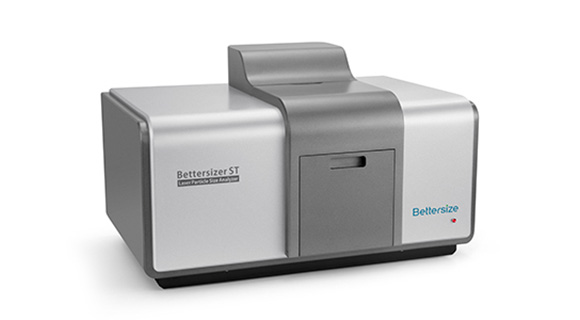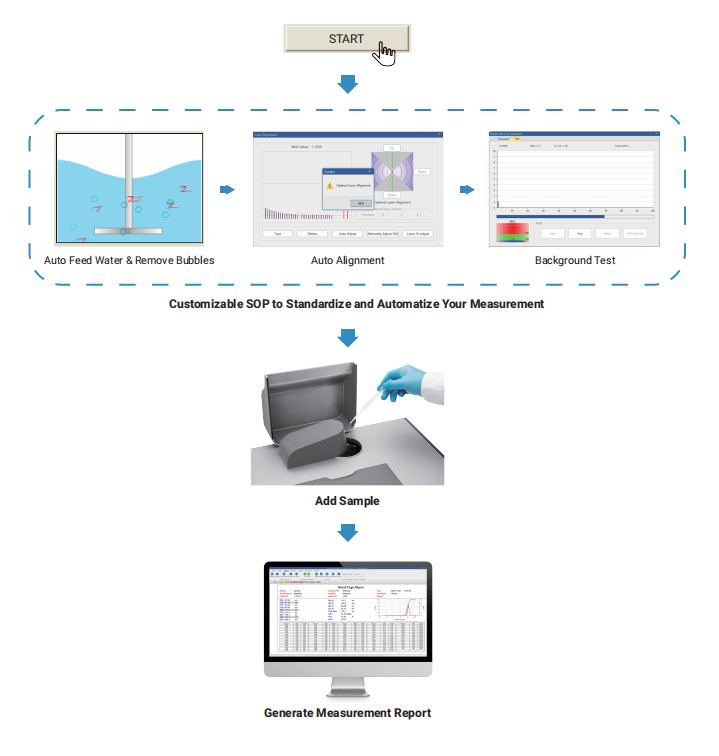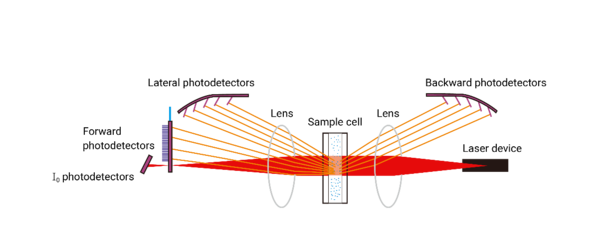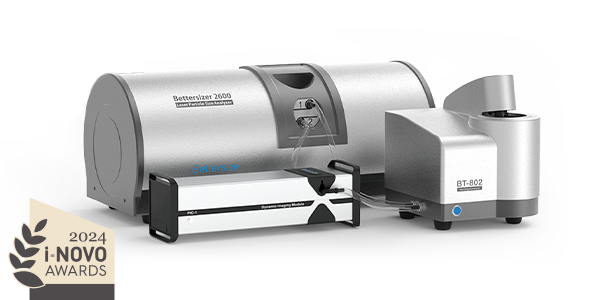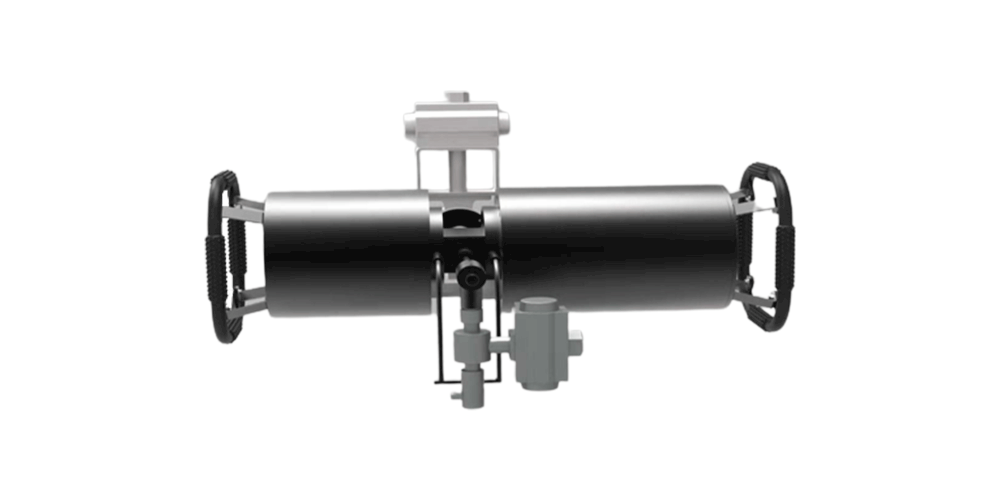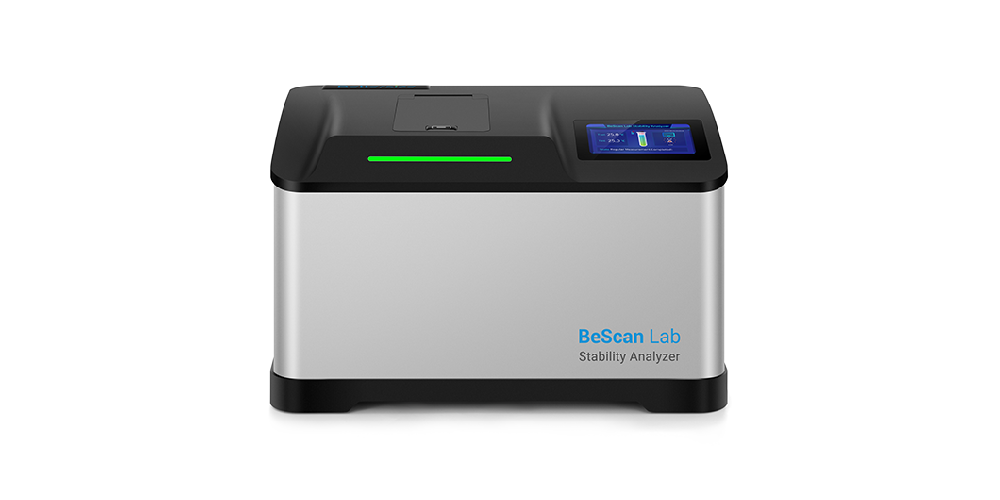Bettersizer ST
Bettersizer ST - это полностью автоматизированный и интегрированный анализатор размера частиц с интеллектуальной системой работы методом мокрого диспергирования. Оптимизированный для промышленного процесса контроля качества, Bettersizer ST обеспечивает стабильные и надежные результаты тестирования при минимальном вмешательстве пользователя. Компактные размеры позволяют экономить рабочее пространство на заводах и в лабораториях.
Особенности и преимущества
- ● Тип дисперсии: Влажный
- ● Диапазон размеров: 0,1 - 1,000 мкм
- ● Устойчивость
- ● Простота использования
- ● Экономическая эффективность
- ● Компактный дизайн
- ● Не требует особого ухода
- ● Система с двумя объективами
- ● Функция автоматического выравнивания
- ● Автоматическое измерение с помощью SOP
Видео
How to Install and Operate Bettersizer ST 
Bettersizer ST Self-Installation is Quick and Easy 
Learn How Bettersizer ST can Help with Your Quality Control in 2 Minutes 
Bettersizer ST | Demo (CaCO3 Sample) 
Bettersizer ST Overview | Laser Diffraction Particle Size Analyzer for QC 
Обзор
Характеристики
SOP
DLOS
Технология
Технические характеристики
Ваш универсальный инструмент контроля качества
Bettersizer ST - это автоматический лазерный дифракционный анализатор размера частиц, предназначенный для промышленного контроля качества. Запатентованная оптическая система DLOS (Dual Lens Optical System) гарантирует, что прибор будет выдавать стабильные и надежные результаты гранулометрического анализа. Стандартная операционная процедура (SOP) и автоматизированные процедуры анализа разработаны для того, чтобы помочь вам сэкономить драгоценное время для проверки качества.
1. Отличная точность
♦ Проверка точности стандартов
- Стандартные образцы Duke были измерены отдельно с помощью лазерного анализатора частиц Bettersizer ST, показав пик распределения в правильном положении и узкое распределение с высокой точностью.
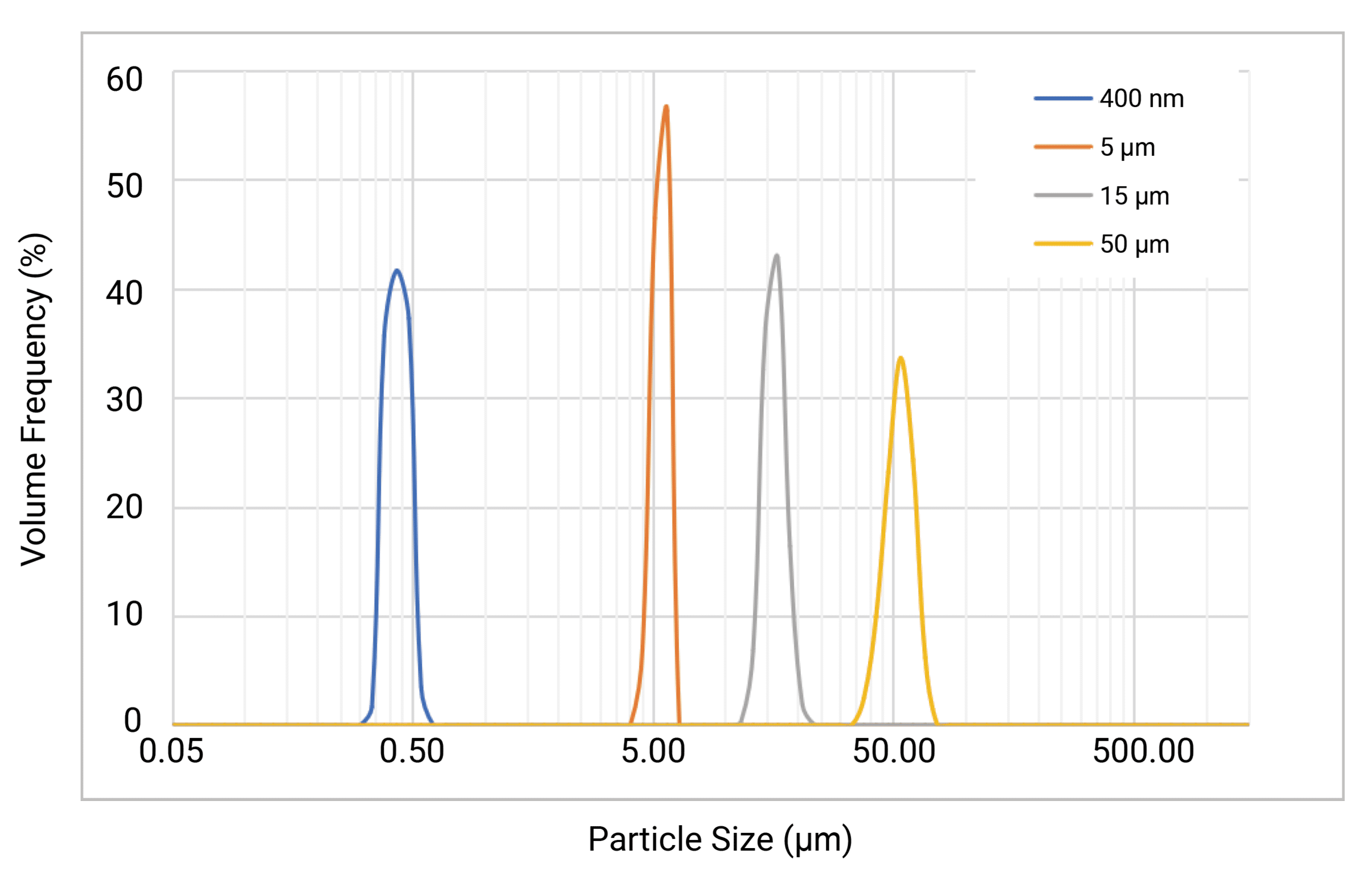
- Красная линия - это номинальный диапазон размеров стандартов ± 1,0%, а черные точки - измеренные размеры. Как показано на рисунке, точность измерений лазерного анализатора частиц Bettersizer ST для стандартов находится в пределах 1 %.
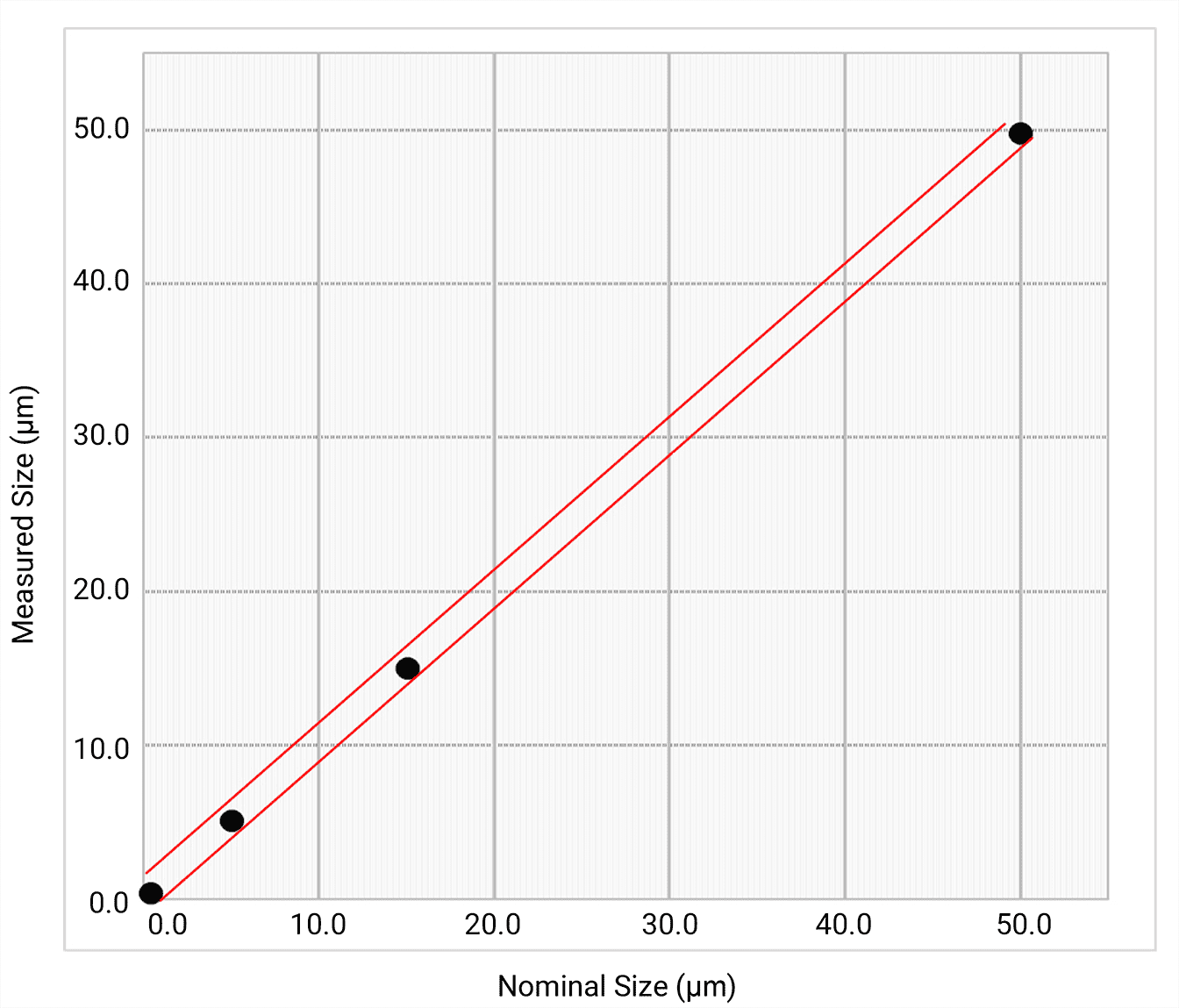
2. Выдающаяся повторяемость
Исключительная повторяемость, обеспечиваемая лазерным анализатором частиц Bettersizer ST, гарантирует надежность результатов. Быстрые измерения с последовательными и надежными результатами могут облегчить вашу работу по контролю качества.
♦ Превосходная повторяемость обусловлена
Стабильность систем передачи сигнала - Эффективная дисперсионная система - Автоматическая юстировка позволяет всегда поддерживать прибор в оптимальном состоянии - Скорость получения сигнала до 3500 раз/секунду
♦ Испытания на воспроизводимость
Выдающаяся повторяемость Bettersizer ST, продемонстрированная следующими двумя последовательными испытаниями.
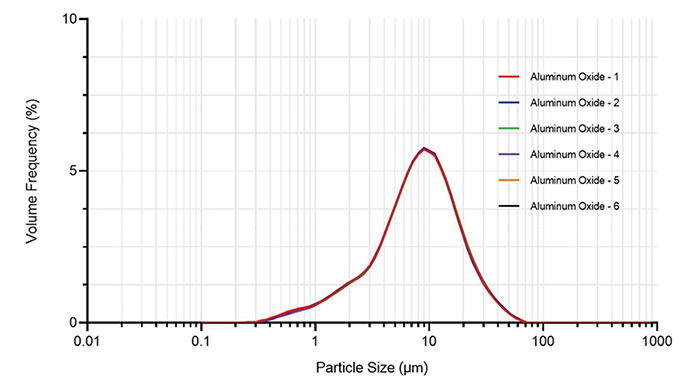 | 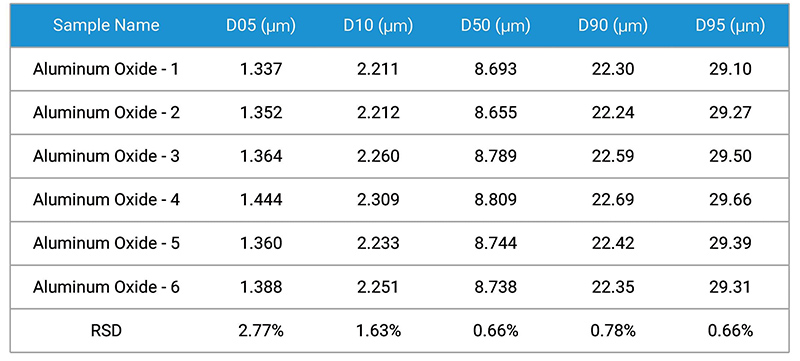 |
 | 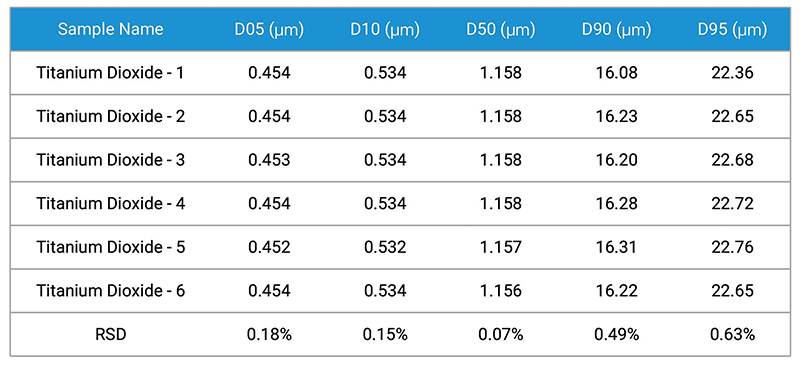 |
3. Облегчение рабочей нагрузки во всех аспектах
Программное обеспечение Bettersize предоставляет различные функции, которые значительно снижают вашу рабочую нагрузку.
1) Интуитивно понятное программное обеспечение
2) Интеллектуальная оценка данных для контроля качества

3) Проверка производительности
Благодаря независимой функции проверки эффективности программное обеспечение может автоматически генерировать отчеты, соответствующие ISO 13320 и фармакопее.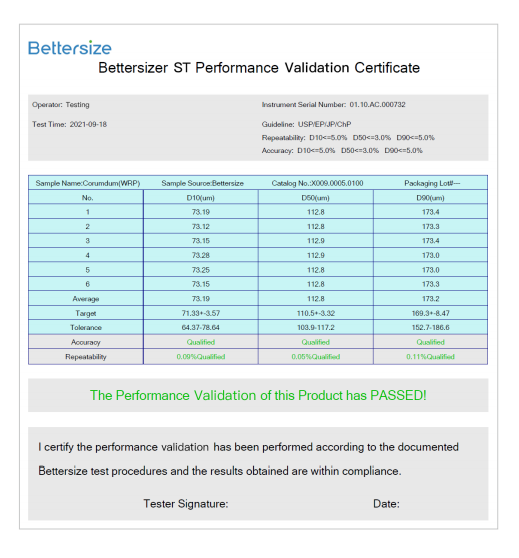
4) Проверка системы
Диагностическое сканирование: Контрольный список проверки системы.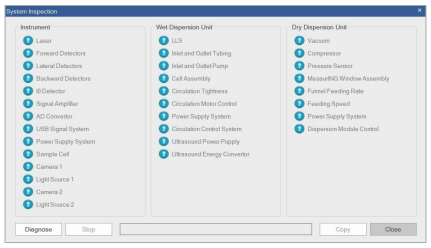
4. Экономическая эффективность и прочность
1) Выдающаяся прочность
- Встроенная литая нижняя пластина защищает прибор
- Точные измерения могут быть достигнуты даже после проверки на прочность
- Долговечный источник волоконного полупроводникового лазера
- Прочный циркуляционный резервуар из литой нержавеющей стали
- Регулируемый по мощности ультразвуковой диспергатор с защитой от сухого хода
2) Компактный дизайн
- Экономия ценного рабочего пространства на заводах и в лабораториях благодаря внутренней системе мокрого диспергирования
- DLOS обеспечивает точность и надежность результатов, избегая использования складной оптики, которая подвержена смещению
3) Простое обслуживание
- Простая разборка ячеек для образцов обеспечивает быструю очистку, которая может быть легко осуществлена без использования профессиональных инструментов и чрезмерно чистых составов
- Функция автоматической очистки циркуляционного резервуара значительно облегчает работу по обслуживанию
- Процесс автоочистки можно легко настроить в программном обеспечении
4) Низкая стоимость владения
- Цена начального уровня для лазерного анализатора размера частиц
- Диапазон измерений, охватывающий большинство областей применения, может быть достигнут с помощью DLOS без дополнительных затрат на второй лазерный источник
Citations
- Bettersizer 2600
Functional redundancy as an indicator for evaluating functional diversity of macrobenthos under the mussel raft farm near Gouqi Island
DOI: 10.1016/j.aquaculture.2023.740024 Read ArticleZhejiang Ocean University | 2024Biological traits analysis (BTA) helps to evaluate the effects of different environmental variables on the traits-based functional composition of macrobenthos. However, research on functional traits of macrobenthos under mussel farming is limited. We investigated the spatial and temporal response of the benthic system in terms of taxonomic and functional diversity to environmental variables of farming and natural stressors resulting from suspended mussel farming near Gouqi Island of eastern China Sea. The functional traits of macrobenthic assemblages under mussel farming were characterized by “medium adult body size”, “vermiform body form”, “high flexibility”, “infauna”, “semi-motile”, “gonochoristic”, “surface deposit-feeders”, “carnivores”, “semi-motile burrowers”, and “tube-dwellers”. Functional redundancy was stable in response to mussel farming stresses among seasons, whereas species diversity showed efficient to evaluate natural variables. Functional diversity was significantly affected by farming stressors rather than natural variables, Further analysis using multivariate methods together with continuous monitoring were highlighted to evaluate the impacts of mussel farming. Our results reinforce the importance of macrobenthic species and functional traits analysis to evaluate human stresses driven impacts in offshore ecosystems. By analysing the environmental variables with different sources, independently, we concluded the main effects of human pressures on macrobenthic community. Such distinction could be particularly effective to isolate variable environmental descriptors and evaluate their effects on functional diversity, making the current approach promising for the evaluation of ecological effects of anthropogenic stressors in aquaculture areas. - Bettersizer 2600
Degradation characteristics and utilization strategies of a covalent bonded resin-based solid amine during capturing CO2 from flue gas
DOI: 10.1016/j.seppur.2023.125621 Read ArticleChina University of Petroleum | 2024In this study, various types of degradation as well as attrition which are possibly encountered in a circulating fluidized bed temperature swing adsorption (CFB-TSA) process, were conducted experimentally to evaluate the stability of a resin-based solid amine sorbent. Other characterizations methods, such as elemental analysis (EA), Fourier transform infrared spectroscopy (FTIR) etc. were applied to further reveal the degradation mechanisms. The results showed that thermal degradation occurs from 140–160 °C due to the decomposition of amine group. The CO2-induced degradation occurs from a higher temperature of 160–180 °C accompanied by the production of urea. Hydrothermal stability is good below 130 °C, but the ionic impurities in steam crystalized on particle surface can accelerate the degradation. Oxidative degradation is the most harmful, which starts at a lower temperature of 70–80 °C with the formation of aldehyde. The existence of H2O in atmosphere can alleviate the oxidative and CO2-induced degradations. The employed sorbent has a very low attrition index of 0.05, which is 1–2 orders lower than typical commercial fluidized bed catalysts. Based on the results of stability evaluation, some design suggestions for proper utilization of this sorbent or other similar resin-based sorbents have been provided in an industrial CFB-TSA process.
- Bettersizer 2600
De-branching of starch molecules enhanced the complexation with chitosan and its potential utilization for delivering hydrophobic compounds
DOI: 10.1016/j.foodhyd.2023.109498 Read ArticleShihezi University | 2024The current study aimed to prepare the complexes between debranched-waxy corn starch and chitosan polymers (DBS-CS), and then investigated their corresponding structural characteristics, rheological property and potent application in Pickering emulsion. The results indicated that the existence of chitosan significantly inhibited starch short-range molecular rearrangement for all DBS-CS samples, which was manipulated by both debranching treatment and chitosan content. Interestingly, this is the first study to reveal that the outstanding peak at 1.8 ppm in 1H NMR spectrum for sample DBS-CS was gradually shifted towards a lower-field region following an increased chitosan content. Moreover, the debranching treatment shifted the crystallinity pattern from A-type to B-type and the relative crystallinity of DBS-CS decreased gradually with the increased content of CS. All samples had a pseudoplastic fluid and shear-thinning behavior with an enhanced shear resistance following the complexation. The DBS-CS was applied in a Pickering emulsion for showing a greater emulsifying stability and a lower gel strength than native NS-CS prepared emulsion. Importantly, the encapsulation ability of curcumin in the DBS-CS emulsion was significantly improved, followed by an increase of 15.45% for its corresponding bioavailability compared to the control. Therefore, this study might highlight a potential carrier for delivering the bioactive substances in a green pattern. - Bettersizer 2600
Heat-induced aggregation behavior of wheat gluten after adding citrus pectin with different esterification degree
DOI: 10.1016/j.foodhyd.2023.109420 Read ArticleGansu Agricultural University | 2024Wheat gluten aggregation during heat treatment is beneficial to the final quality of gluten-based products. Exogenous pectin can affect gluten aggregation. However, the effect of pectin with different degrees of esterification on the heat-induced aggregation behavior of gluten and its possible mechanism are still unclear. Thus, the heat-induced aggregation behavior of gluten after adding pectin with different esterification degree was studied in this study. When the temperature was raised from 25 °C to 95 °C, pectin affected gluten aggregation and was related to the degree of esterification. Specifically, the results of rheological properties and particle size indicated that low-ester pectin improved the viscoelasticity of gluten and promoted gluten aggregation. Thermal properties revealed that enthalpy of gluten added with low-ester pectin (37%) increased from 92.96 J/g to 95.40 J/g during heating process. Structurally, the fluorescence intensity and surface hydrophobicity of gluten added with low-ester pectin (37%) were lower than those added with high-ester pectin (73%). In addition, low-ester pectin (37%) significantly increased the disulfide bond content (from 15.31 μmol/g to 18.06 μmol/g) and maintained β-sheet content of gluten compared with gluten alone at 95 °C, indicating that low-ester pectin was more likely to induce gluten aggregation. However, scanning electron microscope showed that the gluten added with low-ester pectin (46%) exhibited a denser network structure at 95 °C than that added with low-ester pectin (37%). These results will provide a theoretical base for the regulation of gluten aggregation and the quality of gluten-based products by pectin with different esterification degree.
- 1
- 2
- 3
- 4
- 5
- 6
- 84
Курируемые ресурсы
Отзывы


Соответствующий анализатор размера частиц
-
Bettersizer S3 Plus
Particle Size and Shape Analyzer
Measurement range: 0.01 - 3,500μm (Laser System)
Measurement range: 2 - 3,500μm (Image System)
-
Bettersizer 2600
Laser Diffraction Particle Size Analyzer
Measurement range: 0.02 - 2,600μm (Wet dispersion)
Measurement range: 0.1 - 2,600μm (Dry dispersion)
Measurement range: 2 - 3,500μm (Dynamic imaging)
-
BT-Online1
Online Particle Size Analyzer
Dispersion type: Dry
Measurement range: 0.1 - 1,000μm
Accuracy: ≤1% (D50 of certified reference material)
-
BeScan Lab
Stability Analyzer
Particle size ranges from 10 nm to 1 mm
Volume fraction up to 95%
Compliance with ISO/TR 18811, 13097, 21357, 22107

